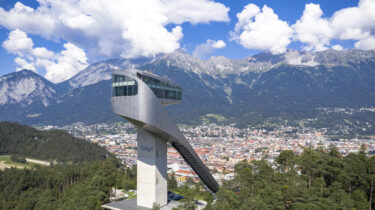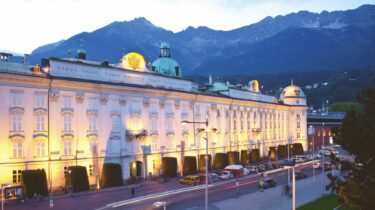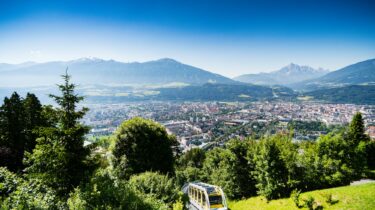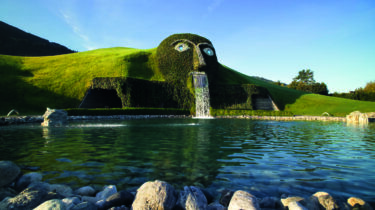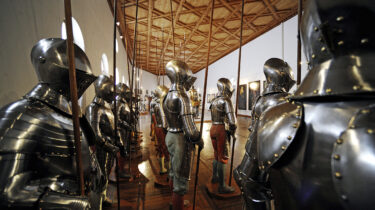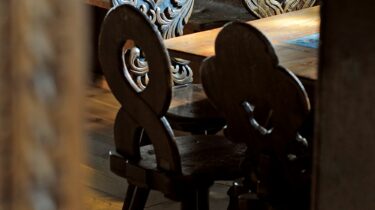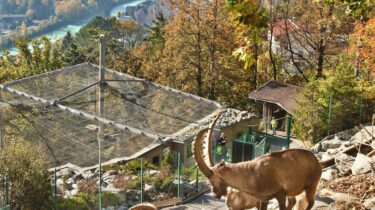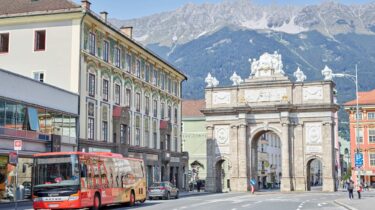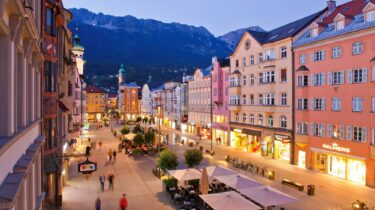Alpine-urban variety: Explore the “must sees” of the Innsbruck region
Last updated on 31.05.2022
Every region has its famous highlights that no visitor should miss, and the Innsbruck region is no exception! Between the Nordkette and the Golden Roof, the Alpine Zoo and Ambras Castle, the unique variety of the Innsbruck region will take you on a special voyage of discovery. And, as the perfect companion, there is the Innsbruck Card, which includes all the highlights at unbeatable prices!
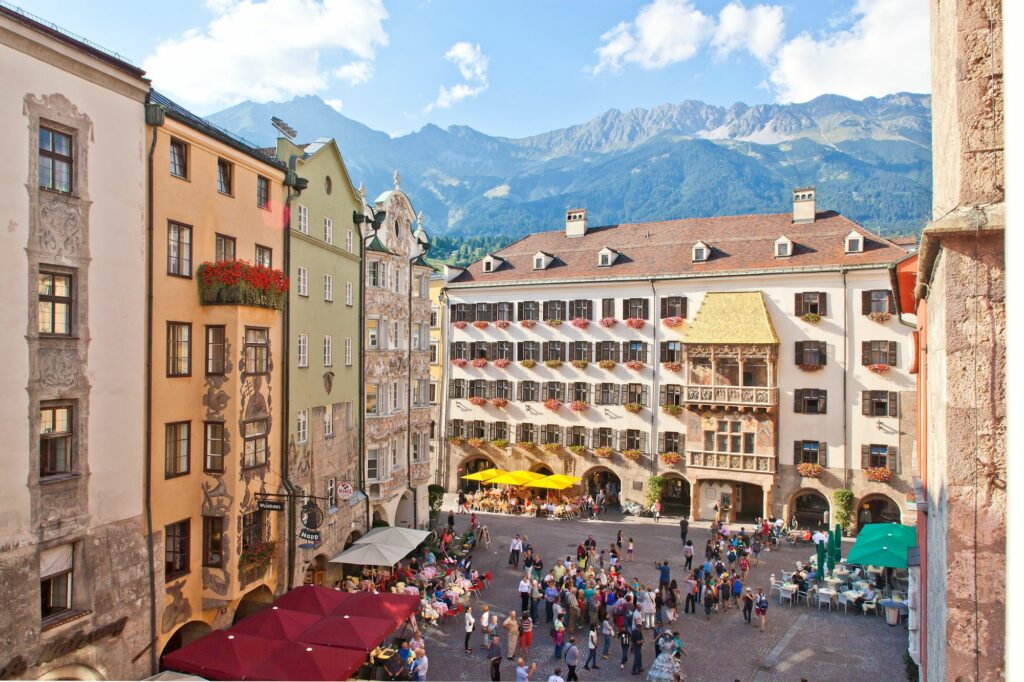
Whether your preference is for city or mountain, cultural treasures or exploring the natural world, the familiar or the spectacular – the Innsbruck region has a wide variety of leisure activities for city strollers, curiosity seekers, families and adventurers. There is so much to discover on a summer holiday in and around Innsbruck. Along with top tips and hidden places, it is in particular the classics – the “must sees” – that make the region so popular and worth visiting. Here, every day gives you the opportunity to freely choose another special attraction to see, discover and experience. So let’s go!
A secret tip: the Innsbruck Card
Innsbruck’s “must sees” are especially easy to explore with one particular card – the Innsbruck Card. Valid for 24, 48 or 72 hours, it includes admission to 22 sights and museums. It also gives you mobility, as it offers free use of public transport in the city of Innsbruck (IVB services), the Hop-on Hop-off Bus Sightseer Innsbruck, as well as three hours’ worth of bicycle hire. Conveniently, it is also valid on the Swarovski Crystal Worlds Shuttle! And, because a visit to Innsbruck is hardly imaginable without a mountain adventure, it includes one ascent and one descent on the Nordkettenbahnen and Patscherkofelbahn funicular and cable cars. For all information see www.innsbruck.info/innsbruckcard.
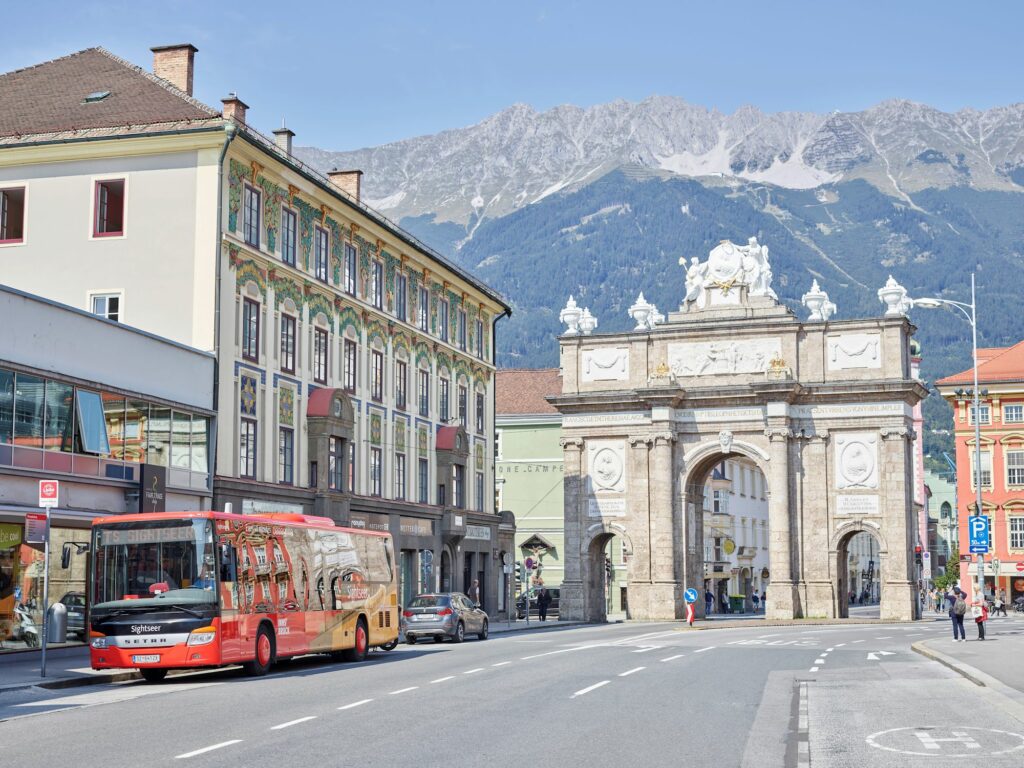
Innsbruck’s old town: the heart of the city
The best place to start your tour of discovery is right in the old town, already a thriving urban centre over 500 years ago during the reign of Emperor Maximilian I, and a popular venue for knights’ tournaments. Today you can get a “front row seat” in one of the charming street cafés from where you can view observe the busy goings-on in the alleyways and under the Gothic arcades. Speaking of views, the best way to see the Golden Roof with its 2,657 fire-gilded copper tiles, the rooftops of the old town and the surrounding mountains is to climb the City Tower. A total of 133 steps – every one well worth it – lead up to the 31-metre-high viewing platform with its spectacular panoramas!
Innsbruck’s Nordkettenbahnen funicular and cable cars: direct from city to mountain
But, for a truly long view, you have to go even higher: to the Nordkette to be precise! The Hungerburgbahn funicular takes you directly up from the old town to the Hungerburg district; you then continue with the Nordkettenbahnen up to the Seegrube and the Hafelekar peak. In just a short while you are at an altitude of over 2,000 metres: unbelievable when you think that you were sitting in one of the cafés in the old town and now, 30 minutes later, you are in the realm of the ibex and the chamois. The Nordkette is an ideal destination and attraction for all, from sports enthusiasts to those of a more leisurely disposition. Anyone who has been there can tell you why: the journey up into the mountains affords not only breathtaking views, but also architectural highlights from the 20th and 21st centuries such as Zaha Hadid’s Hungerburgbahn stations, Franz Baumann’s cable car stations and Snøhetta’s architectural elements on the Panoramic Trail.
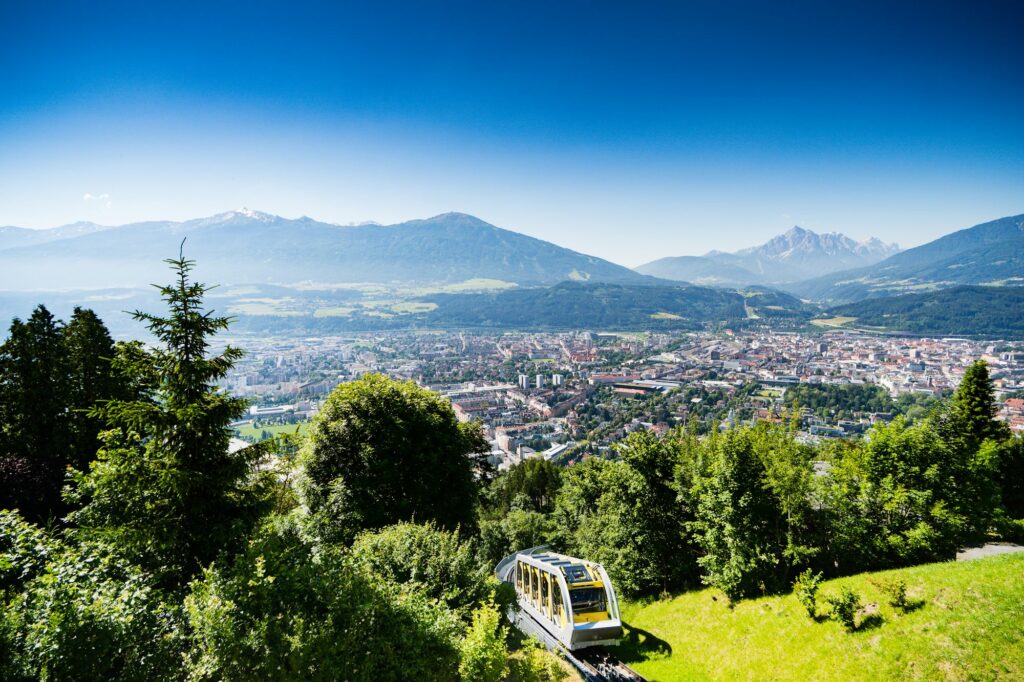
Alpine Zoo Innsbruck: let’s go wild!
The Alpine Zoo is also located above the city rooftops. No other zoo in the world offers visitors such a vast collection of wild animals native to the Alpine region. Around 150 species, totalling 2,000 Alpine animals, live here in Europe’s highest zoo: for example bears and pygmy owls, golden eagles and terrapins, ibex and otters. Hardly anywhere else can you get so close to the animals that inhabit the Alps!
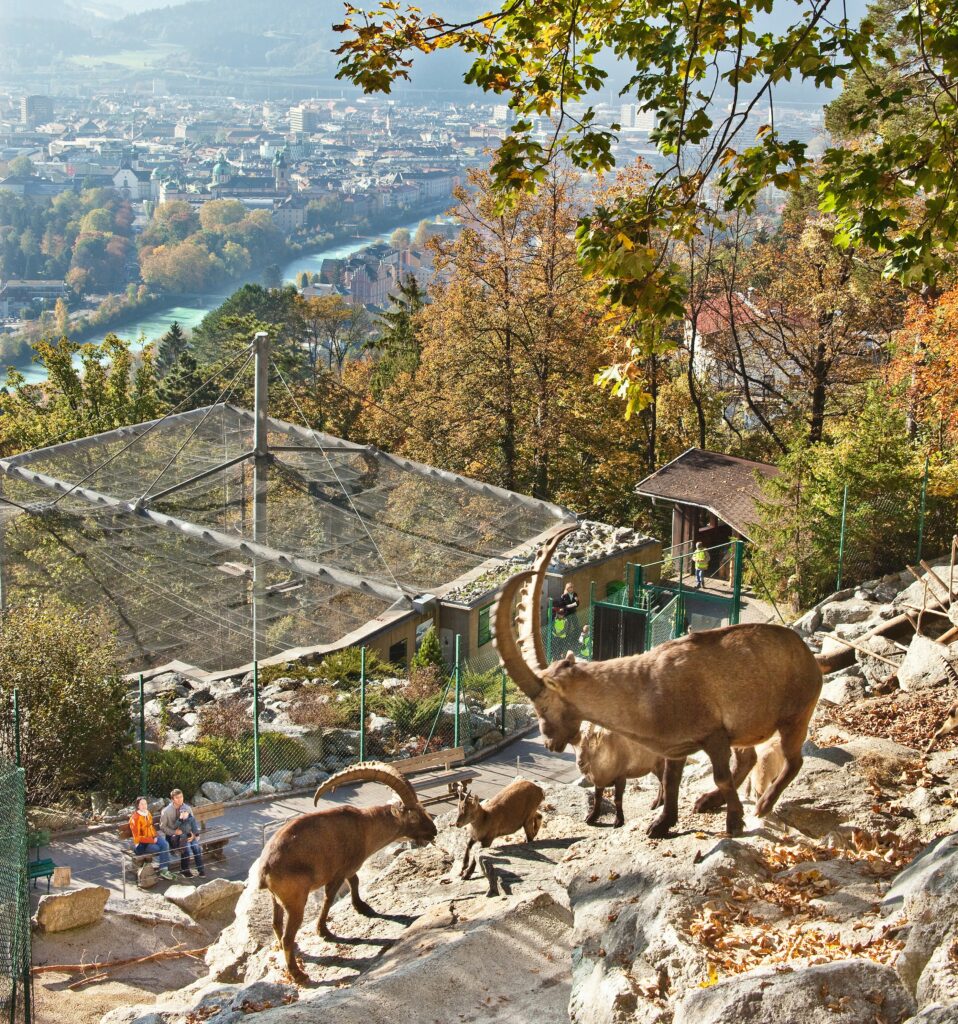
The Hofburg Imperial Palace and the Court Church: Maximilian, Sisi und Co.
Back down in the city, the traces of the Habsburgs can be found everywhere: in the Court Church, for example, popularly known as the “Schwarz Mander Kirche”. The name stems from the “black men”, 28 larger-than-life bronze figures who stand beside the pompous yet empty tomb of the Emperor Maximilian I. For more of the Habsburgs, look in the immediate vicinity of the Imperial Palace. Together with its counterpart, the Viennese Hofburg, and Vienna’s Schönbrunn Palace, the Innsbruck Hofburg is one of Austria’s most important cultural buildings. It preserves the legacy of the Empress Maria Theresa, who ordered its conversion to a Baroque palace in the 18th century. Highlights include the Guard Hall; the “Inner Apartment” furnished for the Empress Elisabeth (“Sisi”); and, in particular, the Giant’s Hall.
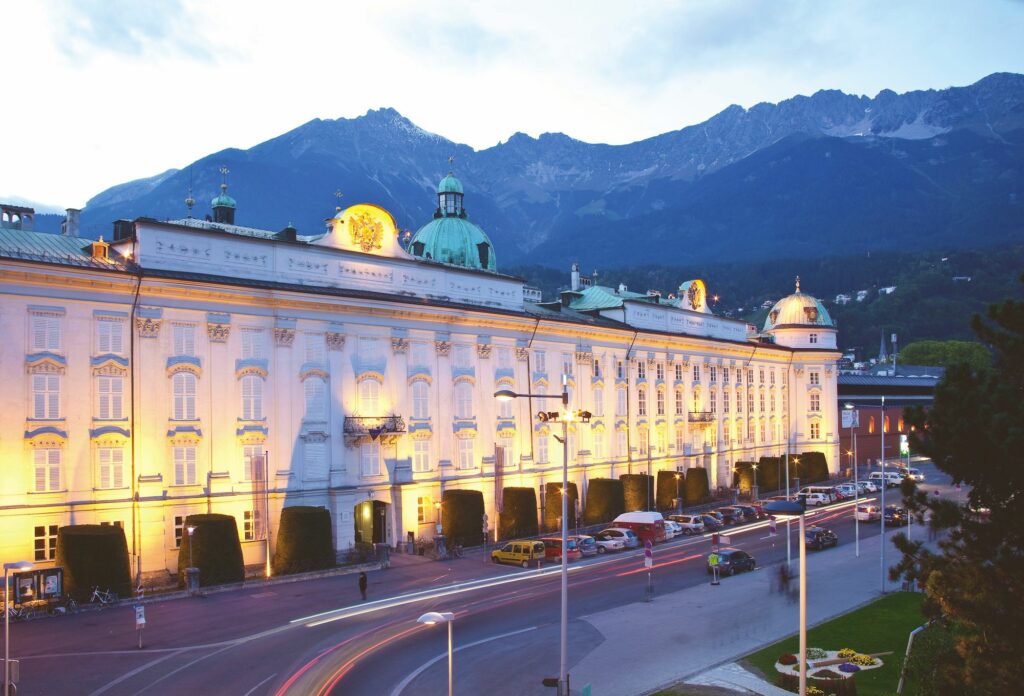
Swarovski Crystal Worlds: a magical, glistening firework display
In Wattens, some 15 kilometres east of Innsbruck, a magical realm awaits young and old alike: the Swarovski Crystal Worlds. Guarded by a water-spitting giant, they conceal sparkling Chambers of Wonder, spectacularly staged by international artists. The magic continues in the artistically designed gardens, where a crystal cloud set with 800,000 stones, magically reflected in the black waters, is sure to astonish visitors. Youngsters too can have fun in the labyrinth, on the playground and in the play tower. Sparkling accessories and delicate figurines can also be purchased from the Swarovski Crystal Worlds store in Innsbruck’s old town.

Ambras Castle: dreams of the Renaissance
To the south of Innsbruck stands Ambras Castle, a magnificent palace that is a testament to the love of the Habsburg Archduke Ferdinand II, who had the structure extended for Philippine Welser, his morganatic wife. Surrounded by an idyllic palace garden, itself well worth a stroll, the palace awaits with its rooms, chambers of art and wonders. The Renaissance world opens up here with magnificent collections of curious, valuable and marvellous objects. The Spanish Hall is a particularly gorgeous highlight: at 43 metres in length, its partially gilded wooden coffered ceiling makes it one of the world’s most beautiful free-standing halls.
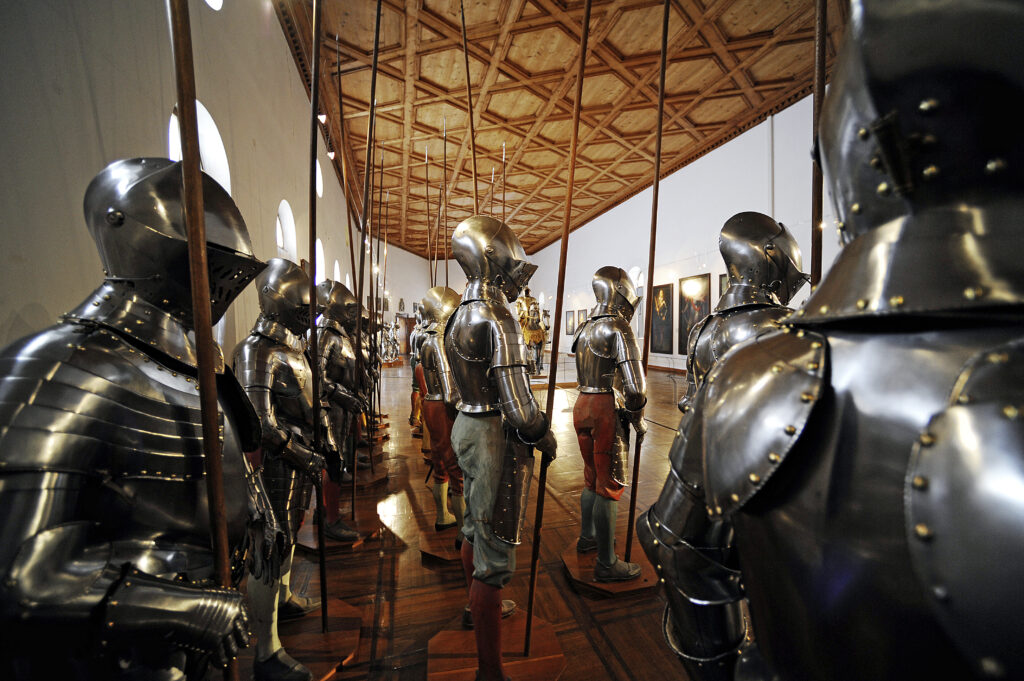
Innsbruck’s Bergisel: contests old and new
Steeped in history, the Bergisel, a hill of barely 750 metres in height to the south of Innsbruck, was the scene of a number of battles fought by Andreas Hofer in 1809. The Tirol Panorama strikingly shows how the famous Tyrolean freedom fighter won the third great Battle of Bergisel. The dramatic events of the Tyrolean uprising are depicted in a 360-degree circular painting on a 1,000-square metre screen, the largest artwork in Tyrol. Nowadays the Bergisel is a meeting place for sports fans: designed by Zaha Hadid, the ski jump has stood here since 2002 and each year is the venue for the international Four Hills Tournament. You can sense the emotion of the ski jump competitors and fans alike in the stadium and on the launch platform.
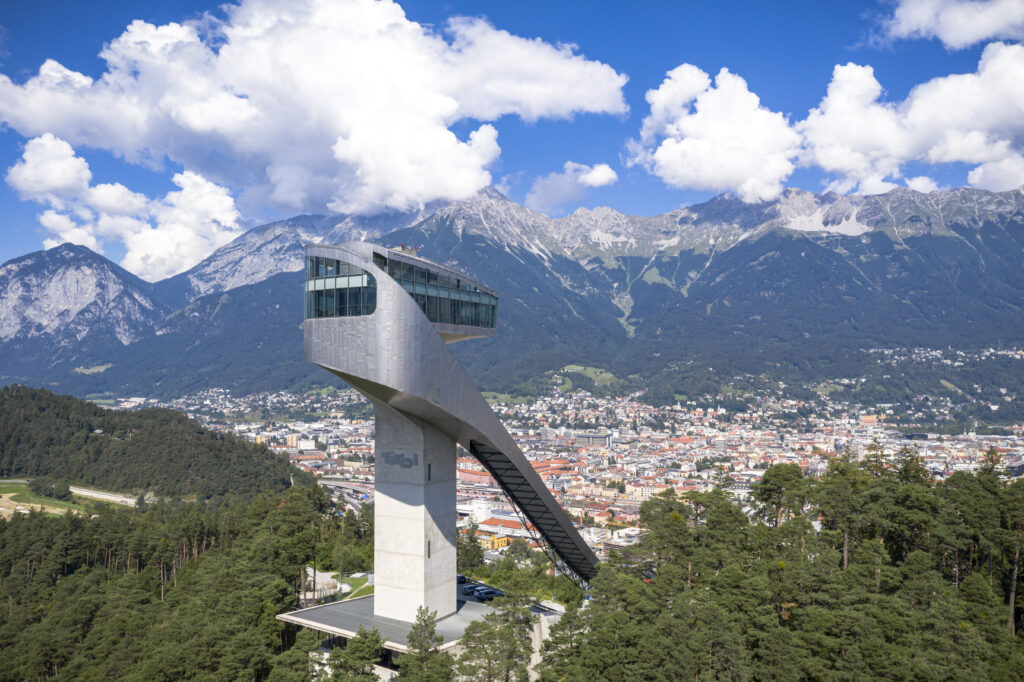
Maria-Theresien-Strasse: where history comes to life
The Empress Maria Theresa is not just of importance on account of the Imperial Palace: the shopping street in the city centre is named in her honour. Today a pedestrian zone, the street is a living history book for visitors to stroll, look, linger and enjoy. Historic squares and venerable buildings meet contemporary architecture, while the richly decorated façades of Baroque and Classicist palaces adjoin inviting street cafés and upmarket shops. A modern tone is set, for example, by the two shopping centres, the RathausGalerien and the Kaufhaus Tyrol, with their wide range of shopping opportunities. And, surrounded by the hustle and bustle, the white and gold of St. Anne’s Column soars, while further south the Triumphal Arch marks the start of the avenue.
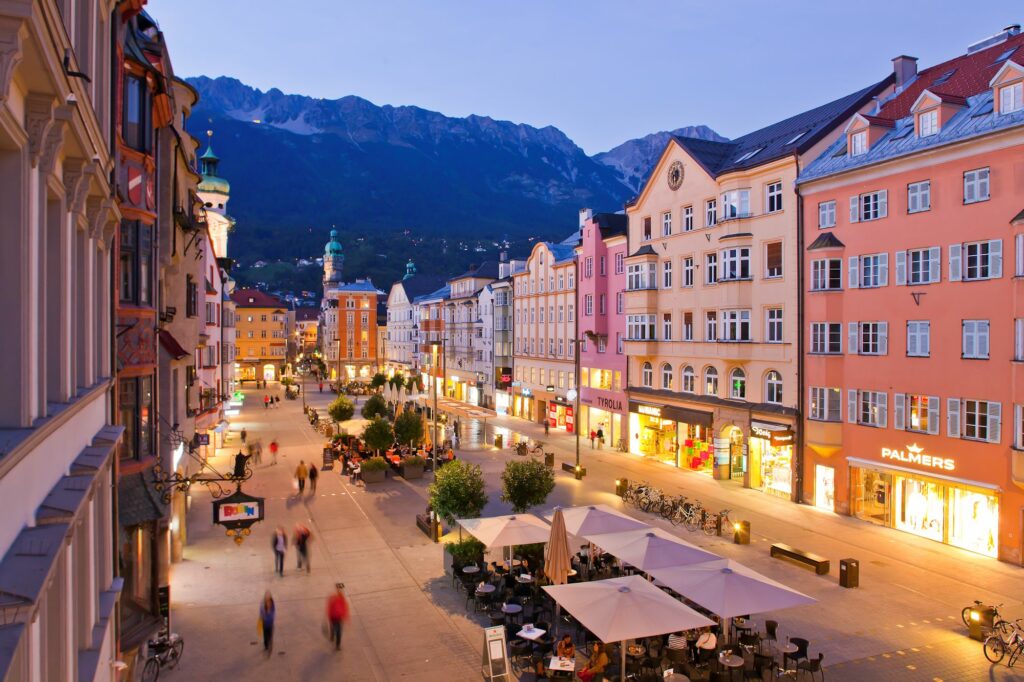
The Tyrolean Folk Art Museum: priceless cultural treasures
The Tyrolean Folk Art Museum takes you on a fascinating journey back through the centuries, with traditional costumes, a remarkable collection of nativity scenes, wood-panelled rooms and folk figures, both eerie and dazzling. Expanded from the Tyrolean Museum of Crafts, established in 1888, it today houses the most important collection of cultural artefacts from the historic Tyrol region – a veritable treasure trove of exhibits!
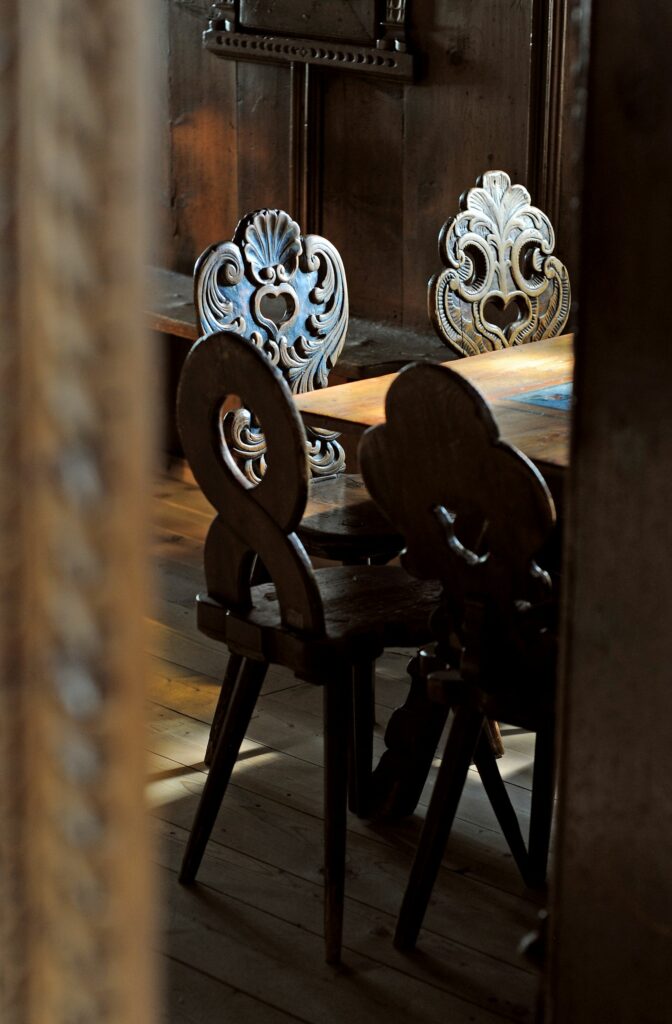
For all information and even more highlights see www.innsbruck.info/top-sights.
About Innsbruck Tourismus
Innsbruck Tourismus is the official destination management organisation for the Innsbruck region, encompassing the capital of Tyrol and over 40 localities in the surrounding area, from the Inntal valley to the Mieming Plateau via Kühtai and as far as the Sellraintal valley. With almost 3.5 million overnight stays (as of 2019), the Innsbruck region is one of Austria’s largest tourism institutions – a unique symbiosis of pulsating urban space and fascinating Alpine world. The vibrant city atmosphere and sightseeing highlights are just a stone’s throw from your next biking or hiking tour, your next ski adventure or winter walk. The Welcome Card, free for visitors, is the key to the region’s boundless opportunities: public transport, usable at no cost, means that the area’s numerous highlights can be enjoyed both sustainably and comfortably. Visitor enjoyment is the focus of the thoughts and actions of each of the organisation’s 90 or so staff: they pass on their passion and enthusiasm for this alpine-urban space to guests, ensuring unforgettable holiday experiences for all in harmony with both people and nature. With a total of twelve tourist information offices, Innsbruck Tourismus can stay close to visitors, be right in the action and keep a finger on the pulse of events – a true hub for the authentic stories and personal impressions of local characters that can be found on the popular blog and social media channels at #myinnsbruck.
Further links
Blog: www.innsbruck.info/blog
Facebook: www.facebook.com/Innsbruck
Instagram: www.instagram.com/innsbrucktourism
Twitter: twitter.com/InnsbruckTVB
YouTube: https://www.youtube.com/user/InnsbruckTVB
Pinterest: www.pinterest.at/innsbrucktvb/_created


